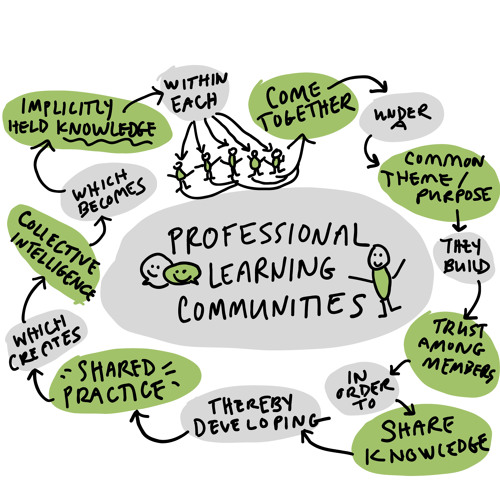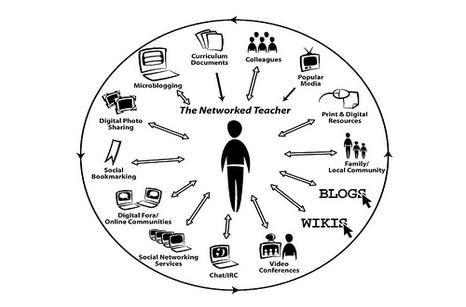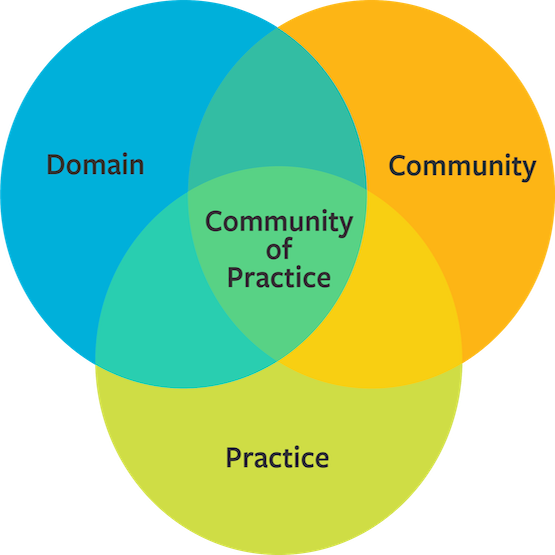Developing a Connected Learning Module
Connected Learning Module
While many of us are participants of these model approaches of education, many of us might not know what it is exactly or may never heard of these terms. Chapter 4 of The Connected Educator: Learning and Leading in a Digital Age by Sheryl Nussbaum-Beach and Lani Ritter Hall focuses on informing the reader of ways to transform the traditional teaching methods by implementing connected learning communities where technology facilitates the flow of information to a wider net of audiences to build connections that enrich professional development. This concept is a valuable one as it transforms the traditional learning communities both online and offline by utilizing technologies that play a crucial role in enhancing and building connections in traditional settings. This method of learning communities is currently seen in many platforms such as HubSpot, Udemy, etc... But one might be left wondering; how does this work? or Have I ever heard of it? More than likely, you have been exposed to them and learned from these methods.
Three Approaches of Professional Development:
Chapter 4 highlighted the importance of leveraging new technologies with the traditional learning methods and communities, but more specifically it focused on three approaches: Professional Learning Communities, Personal Learning Networks, and Communities of Practice.
Professional Learning Communities:
This method consists of traditional school structures for a collective to obtain their education with the common goal of achieving student improvement. It focuses on the structure found in most school systems across the United States where there are common rules, social and academic structure that is systematic to approaching education. Some of its characteristics include but are not limited to: classroom meetings, same curriculum and goals for outcomes, collective approach for benchmarking success, and utilizing technology tools for collaboration for the community.
Personal Learning Networks:
Within this method, we see different types of information platforms that leverage information for the overall development of an individual. Think of it as you learning from different sources which can include: T.V., YouTube channels, books, blogs, mentors, peers and other media and people with information you want to obtain. Personal Learning Networks go beyond physical limitations by enabling the learner to obtain knowledge across the network from different nation-states through online platforms, publishings and information from someone that may or may not be in close proximity. Some of the characteristics include: utilizing public forums, blogs, advertised and searched content, heavily reliant on seeker gathering information, and the ease of communication between the coder and decoder regarding message.
Communities of Practice:
The system focuses on a collective of individuals with the same ideas, goals and knowledge need for a particular topic or practice. Communities of practice are those that mainly focus on the collective as a whole which have the same urges, needs, and wants pertaining to development within a field. Think of it similarly to a university, a club on campus or extra-curricular activities that focus on a specific topic, theme or objective. Within this system, the flow of information often occurs between the educator and peers who will share topics and ideas within a specific theme regarding their collective mindset. Some examples can be: Nurse practitioners, lawyers within a specific industry, Honda mechanics, cosmetology students, professional welders or financial analysts within the stock market. These communities are ones where people from different background come together and share the flow of information with each other. Here is a detailed example: https://www.quantamagazine.org/the-biggest-discoveries-in-physics-in-2023-20231221/ . In this article you can find physics specific content that shares new break-through information within the field. Those within this field are able to know what is going on and understand their field of expertise through the spread of information through the article published.
Overall Chapter 4 explained how different connected learning communities work and their different characteristics. By exposing the readers to dive into these terms, we can learn how to understand different learning communities, their benefits, their approach to the flow of information, and how they impact overall professional development in individuals. Understanding the different ways of obtaining knowledge can influence educators to provide a deeper understanding of a concept while influencing students to learn beyond traditional methods. Know that there are many approaches to obtain relevant information within the field you are exploring.
Whether you currently obtain your knowledge from Personal Learning Networks, Communities of Practice or from Professional Learning Communities, if you strive to obtain information to develop professionally; growth will be evident in how you communicate and show up in your networking spaces.
Let's chat! Which method of learning are you currently part of? Comment below
Best of luck!
Genesis Ramos Piris
The Genny Diary | College Student Edition





Comments
Post a Comment